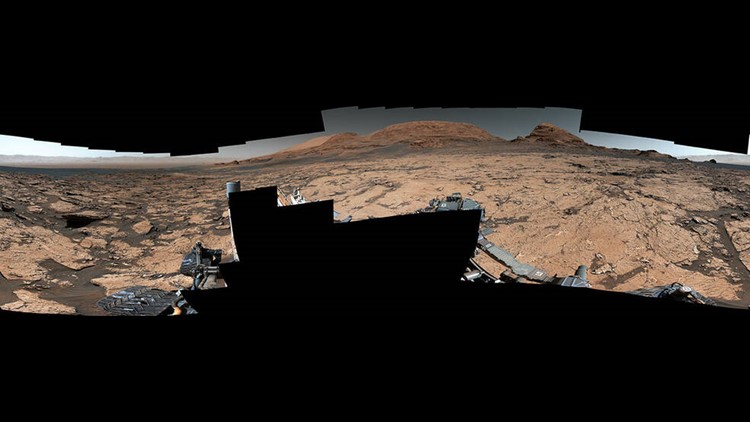INDIANAPOLIS — A patchwork of hexagonal cracks discovered on the surface of Mars could hint at a crucial cycle that may have once supported the emergence of microscopic life.
Though Mars is a harsh, dry desert with a thin atmosphere now, rivers and lakes are believed to have once stretched across its surface. New research published Wednesday in the journal Nature showed researchers who studied an array of well-preserved mud cracks on the surface of Mars think it proves the planet experienced critical wet and dry cycles that nurture complicated chemical processes that could kickstart life.
“These particular mud cracks form when wet-dry conditions occur repeatedly - perhaps seasonally,” said the paper's author, William Rapin, with the Institut de Recherche en Astrophysique et Planétologie, of the finding.
Curiosity observed the hexagonal mud cracks in 2021 as it ascended along Mount Sharp exploring a rock target nicknamed "Pontours."


Since landing on Mars in 2012, the rover has made frequent excursions along Mount Sharp, a central peak within Gale Crater, which is an area the size of Connecticut and Rhode Island, located just south of the planet’s equator.
Mount Sharp is a frequently studied area because stratification of rocks there suggests the crater could be the remnant of billions of years of deposits that were laid down after some massive impact excavated Gale Crater, according to NASA.
Layers created by those deposits are like a history book for researchers, with each layer representing a chapter that reflects what was happening on Mars’ environment when the sediments were deposited.
The ability to research those layers allows scientists to examine a sedimentary record that dates back as far as 4.3 billion years.
The rover found a major transitional zone where a clay-rich layer shifted to another, higher sedimentary layer rich with sulfates, a marker of where long dry spells became prevalent and lakes and glaciers began to fade away.
On Earth, scientists know dried mud makes a T-shape. Enough cycles of wet, then drying, can force that T into a Y-shape, like the kind recently discovered on Mars. Hexagonal cracks kept forming in the transitional zone as new sediments were deposited, indicating the process continued for some time, the research shows.
The rover’s advanced instruments identified the patterns as cracks in dried mud, according to the study. It’s a delicate balance — too much water and it’s a lake.
Wet-dry cycles control the concentration of chemicals that feed the fundamental reactions leading to the formation of polymers.
And, rather than one great drying event, the research suggests the repeated wetting and drying of mud created the hexagonal formations occurred over the course of many years.
ChemCam, Curiosity’s laser instrument, confirmed the crust along the crack’s edge were filled with sulfate, which made the mud cracks resistant to erosion and preserved them.
“This paper expands the kind of discoveries Curiosity has made,” the mission’s project scientist, Ashwin Vasavada, of NASA’s Jet Propulsion Laboratory in Southern California, told NASA. “Over 11 years, we’ve found ample evidence that ancient Mars could have supported microbial life. Now, the mission has found evidence of conditions that may have promoted the origin of life, too.”
The discovery of the Pontours mud cracks may now give scientists insight into how life could have originated on Earth.
While scientists on Earth always thought it's possible life could have originated within a wet-drying cycle — something Charles Darwin called a "warm little pond" — Earth's constantly shifting tectonic plates make it impossible to study.
But because Mars doesn’t have tectonic plates, scientists can delve deeper into older periods of the planet’s history that can yield big insights into life on Earth.
“It’s pretty lucky of us to have a planet like Mars nearby that still holds a memory of the natural processes which may have led to life,” Rapin said.



